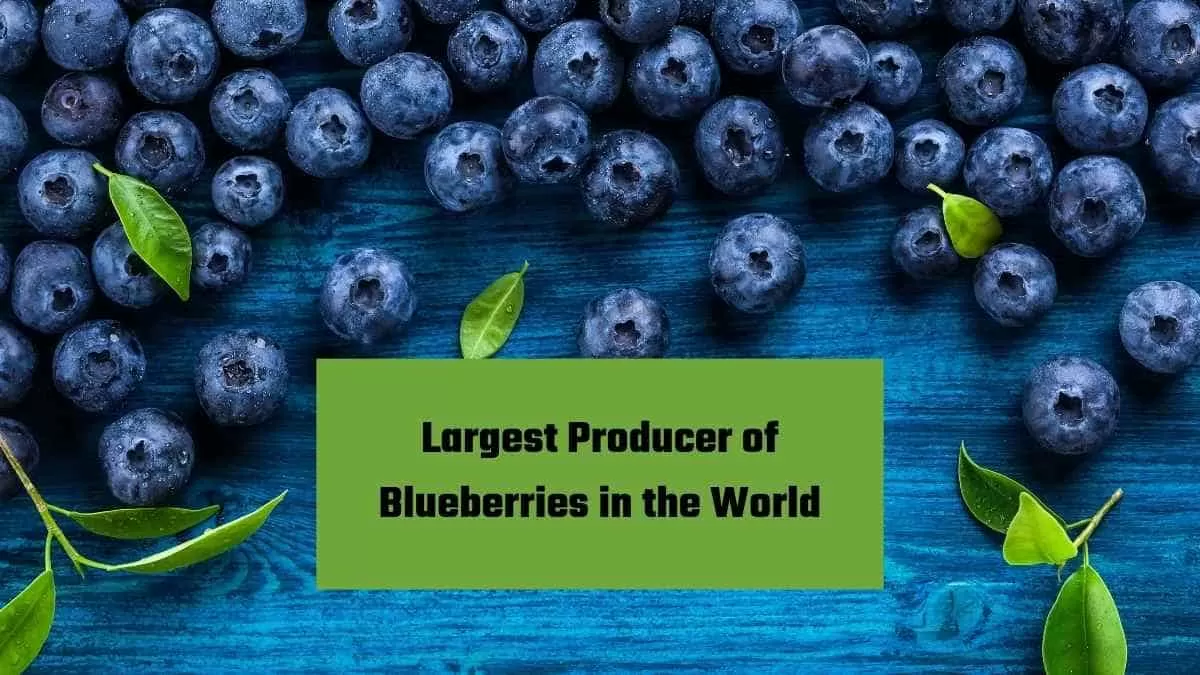Top Blueberry Producer: The United States produces more blueberries than any other country in the world. Blueberries are grown in several U.S. states, but the highest-producing include Washington, Oregon, Georgia, and Michigan. Read below for more information on this sweet, antioxidant-rich fruit that is loved across the globe.
Which Country is the Most Significant Producer of Blueberries in the World?
The United States is the largest blueberry producer globally. Washington State alone contributes a large portion of the national output, thanks to its cool climate and fertile soil. In the eastern U.S., states like Georgia and Michigan also play key roles. The country grows both highbush and wild (lowbush) varieties, which are popular in domestic and international markets. Blueberries are a common ingredient in American snacks, desserts, cereals, and smoothies, celebrated for their taste and health benefits.
Read More: Which Country is the Largest Producer of Pineapples in the World?
How Many Blueberries Does the United States Produce?
The United States grows approximately 317,150 metric tonnes of blueberries every year. These include both cultivated and wild varieties. The blueberry industry in the U.S. is highly organised, with farms focusing on quality, sustainability, and year-round availability through freezing and cold storage. The country exports blueberries across the world and leads in both fresh and processed blueberry markets.
Top 5 Blueberry Producing Countries in The World
| Rank | Country | Annual Production (Metric Tonnes) |
|---|---|---|
| 1 | United States | 317,150 |
| 2 | Peru | 292,584 |
| 3 | Canada | 180,117 |
| 4 | Chile | 122,512 |
| 5 | Spain | 70,420 |
Note: These figures are based on 2025 data from World Population Review.
1. United States
The U.S. leads global blueberry production with over 317,000 metric tonnes grown annually. Washington and Oregon on the west coast, and Georgia, Michigan, and New Jersey on the east coast, are the main blueberry-growing states. Highbush blueberries are the most cultivated variety. These berries are consumed fresh, frozen, or dried, or used in baking, making the fruit highly versatile.
2. Peru
Peru is the second-largest blueberry producer, contributing nearly 293,000 metric tonnes. Its rapid growth in the blueberry sector is due to year-round growing seasons and heavy investment in export infrastructure. Peruvian blueberries are mostly exported to the U.S., Europe, and China.
3. Canada
Canada ranks third with around 180,000 metric tonnes of production. It is famous for its wild (lowbush) blueberries, especially in the Atlantic provinces like Nova Scotia and New Brunswick. Wild blueberries are smaller, more intensely flavoured, and rich in antioxidants.
4. Chile
Chile is a major exporter and the fourth-largest producer of blueberries, growing about 122,000 metric tonnes annually. Its growing season complements northern hemisphere markets, supplying fresh berries during the U.S. and European winters.
5. Spain
Spain produces over 70,000 metric tonnes of blueberries, primarily in Huelva, Andalusia. Its Mediterranean climate and early harvest season allow Spanish blueberries to hit European markets early in the year, giving them a competitive edge.
Which Other Countries Produce Blueberries?
Other notable blueberry producers include Mexico, Poland, Morocco, Germany, and Portugal. These countries are expanding their blueberry farming due to rising global demand, especially in health-conscious markets.
Amazing Facts About Blueberries
• They’re a Superfood: Blueberries are packed with antioxidants, especially anthocyanins, which give them their deep blue colour.
• Long Shelf Life: When properly stored, fresh blueberries can last up to two weeks — or months when frozen.
• Low Calories, Big Benefits: One cup of blueberries has just 84 calories but is high in vitamin C, vitamin K, and fibre.
• Indigenous Origins: Wild blueberries are native to North America and have been consumed for thousands of years.
• They Turn Red When Spoilt: Blueberries that go bad often lose their blue tone and develop a reddish or dull colour, a helpful visual clue.
Read More: Which Country is the Largest Producer of Apples in the World?
